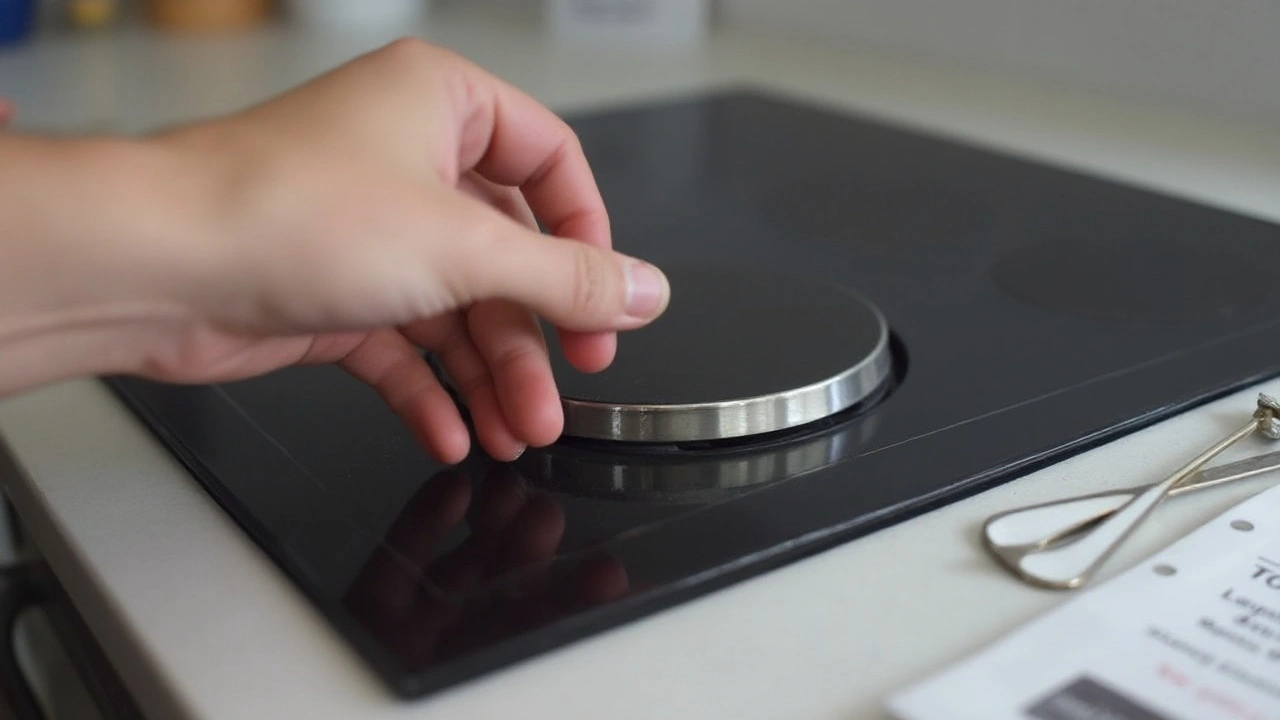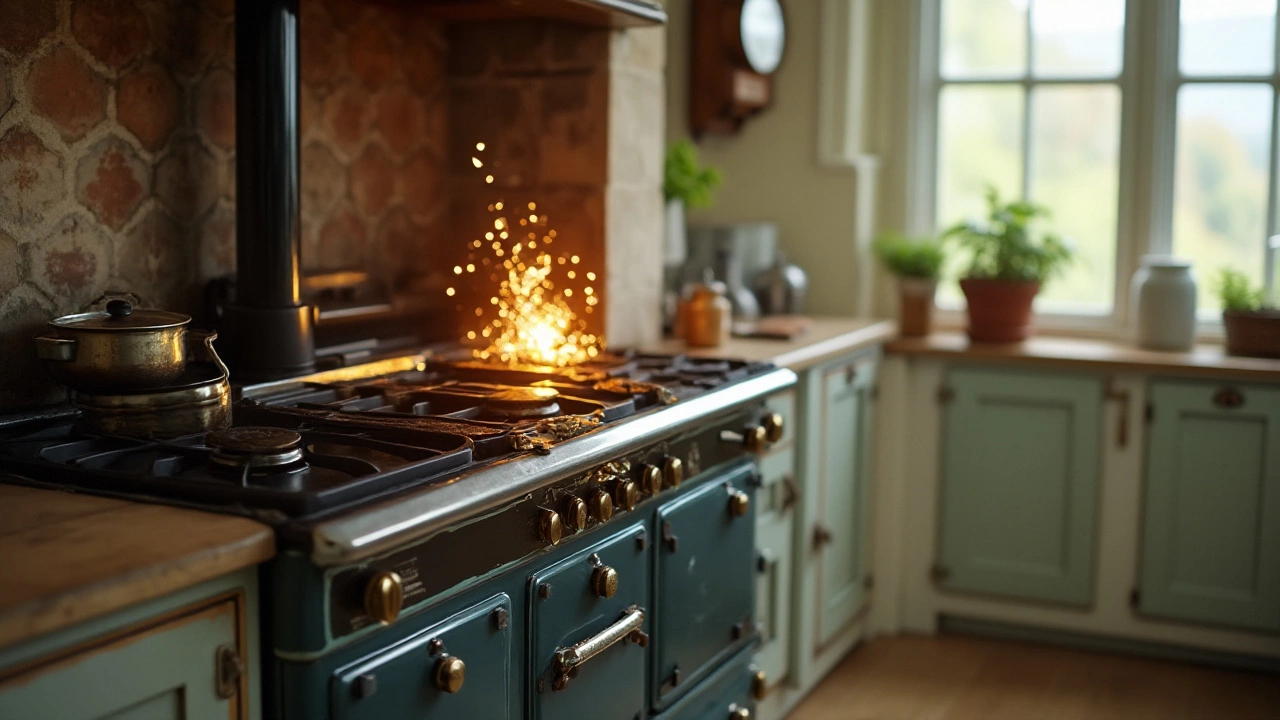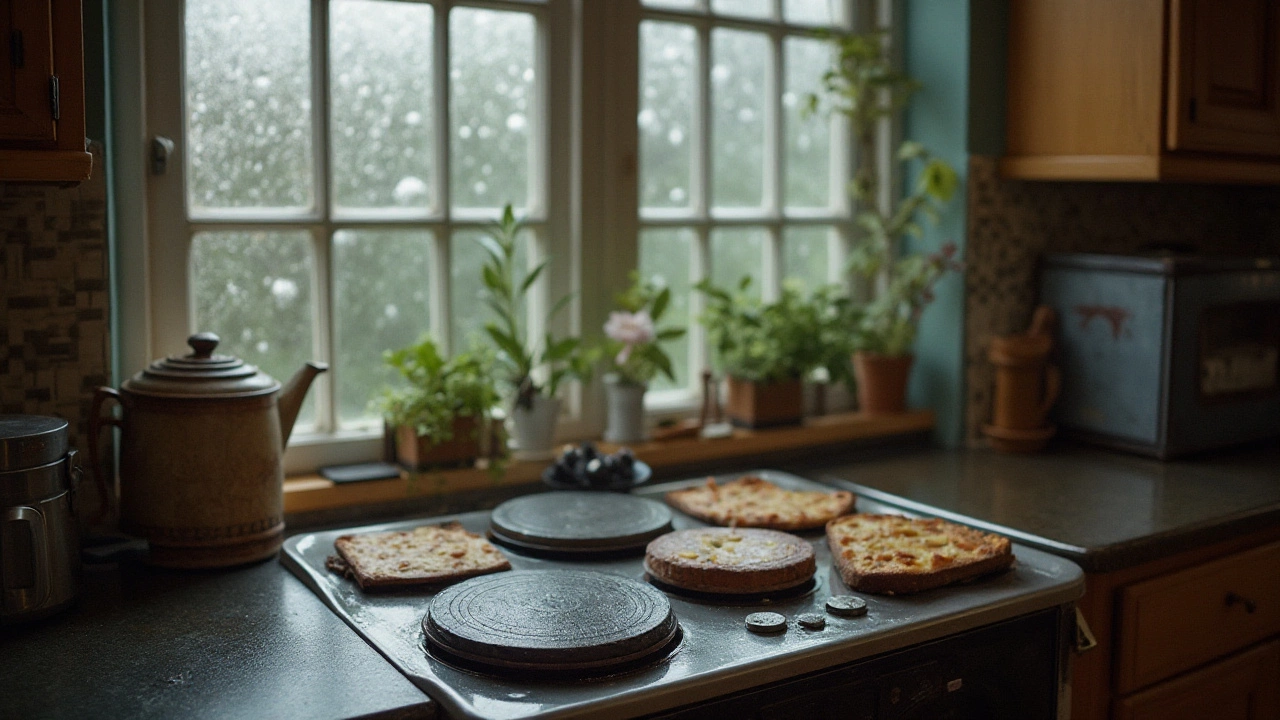Have you ever noticed that your meal cooks unevenly, or your stove burner doesn't heat up like it used to? These might be more than just minor annoyances—they could indicate a faulty electric stove element. Too often, we dismiss these signs, not realizing that they might signal a more significant problem hiding beneath the surface.
Electric stove elements, the unsung heroes of our kitchens, require regular attention to maintain their peak performance. Through this guide, you’ll discover how to identify when an element needs repair, the steps to safely test and replace it, and tips for extending the lifespan of your appliance. Whether you're a seasoned cook or just someone who occasionally uses the stovetop, knowing your way around these issues can save you a lot of trouble.
- Common Signs of a Bad Stove Element
- Testing the Stove Element
- Reasons for Element Failure
- Replacing a Faulty Element
- Preventive Maintenance Tips
Common Signs of a Bad Stove Element
Recognizing when your electric stove is not performing as it should can save you both time and money in the long run. Electric stove elements are engineered to provide consistent heat for cooking, so any deviation may indicate they're on the fritz. A few common indications of a faulty stove element include issues such as uneven heating. If your culinary creations are burning on one side while remaining raw on the other, it might not be your recipe at fault. Instead, consider that the element might have hotspots, which occur when sections of the element wear out or break, causing parts of it to heat up more than others.
Another telltale sign is a failure to heat up entirely. When turning on the stove, if the burner doesn't glow orange or remains at a consistently low temperature despite cranking up the dial, this could signal an internal break in the element coil. A visual check can also be telling—inspect for any physical damage such as blisters, burned spots, or cracks along the surface of the element. Additionally, if you're hearing unexpected noises like buzzing or humming, it might be the element struggling with irregular electrical currents. This is not only an inconvenience but could also pose safety risks.
Sometimes the signs aren't so dramatic, but rather subtle changes over time. Perhaps there is an unexplained increase in cooking time, leaving you wondering if you're just impatient. Do you wait endlessly for water to boil? A lack of efficiency in heating can be a significant indicator. Odd smells can also be a warning sign, especially those reminiscent of burning plastic or electricity, signaling that the element is close to the end of its service life.
For an electro-expert opinion, Dr. Sheila R. Nemec, a respected appliance engineer states,
"Often we overlook these small changes, but attending to early signs of a bad stove element can prevent larger issues down the line. Regular checks and balances keep both the stove and meals from disastrous outcomes."Understanding these common signs helps prevent complete appliance breakdowns during crucial moments. Remember that recognizing a bad stove element might start with something as simple as an unusual smell or sound.
With a 30% increase annually in reported kitchen fires due to appliance failures, proper vigilance is both prudent and necessary. By maintaining awareness of these common issues, homeowners can take proactive steps in ensuring that their kitchen remains a safe and efficient space. Whether you're an avid gourmet chef or just someone who occasionally slips a frozen pizza into the oven, knowledge and action are your best allies in any kitchen.
Testing the Stove Element
Testing your electric stove element is crucial if your meals aren't heating up as expected or the element itself looks physically damaged. It's not uncommon for stovetop elements to experience wear and tear, given their frequency of use. Before jumping to the conclusion that you need a replacement, conducting a few simple tests can help determine if the element is genuinely faulty. The good news is that you don't need to be an electrician to perform these tests.
First, ensure that your stove is completely disconnected from the power supply for safety. Electric stoves can carry dangerous voltages, and it's essential to take proper precautions. Using a multimeter, a versatile tool that measures voltage, resistance, and current, can provide the clearest diagnosis of your element’s health. Set your multimeter to the 'ohms' setting, which will measure the resistance of the heated coil. A typical healthy reading falls between 20 to 40 ohms, depending on the size and wattage of the element. If the reading drastically differs, your element might be faulty.
Visual Inspection
Besides electric testing with a multimeter, a visual inspection should not be overlooked. Look for signs of blistering, cracks, or pieces that may have broken off. Such physical damage is an evident signal that the element needs replacement. Additionally, the prongs that connect the element to the stove's socket should be checked. They should sit securely without excessive play. If you find any burn marks, it might indicate a loose connection that may lead to arcing, which can be hazardous.
Professional Advice
While it's possible to conduct these tests independently, consulting with a professional can sometimes be the safest and most informed option. As appliance specialist James Stover put it,
"Regular testing and maintenance of your electric stove not only ensures optimum performance but also extends its lifespan, preventing unexpected breakdowns."Such wisdom emphasizes the importance of regular check-ups. Any time you are in doubt, a quick call to a professional repair service can offer peace of mind.
Using the Stove's Built-in Diagnostics
Many modern electric stoves feature built-in diagnostic tools. Refer to your stove's manual to learn how to activate these functions. These diagnostics can help identify issues you may not see and may indicate when it's time to replace an element. While these tests are handy, remember they are just one tool in your diagnostic toolkit. Pairing them with manual inspections ensures comprehensive results.
Once you’ve gathered all the data from your tests, you can make an informed decision on whether to replace the element or seek further repair. By undertaking these measures, you validate the significance of maintenance, ensuring that your stove element continues to serve under the best conditions possible.

Reasons for Element Failure
Electric stove elements are resilient components, crafted to handle intense heat and frequent use. However, they are not impervious to wear and tear. Over time, these elements can succumb to various factors leading to their failure. One of the most common issues arises from the simple wear and degradation of materials due to age. Every time you power up your stove, the cycle of heating and cooling puts stress on the stove element issues, causing weakening over months or years. If you think about a piece of metal being repeatedly heated, bent, and cooled, it starts to make sense why these elements have a finite lifespan.
Another significant contributor is physical damage. It might seem surprising, but a dropped pot or pan can significantly impact your stove's element, leading to visible cracks or dislodgements. Often unnoticed until it's too late, such physical impacts can alter the shape or contact points of the element, resulting in poor heating performance. Moreover, accumulation of food residue and spills can create hotspots that weaken the element over time. Such residues can also cause corrosion if they penetrate the protective coatings typically used on stove elements.
According to Susan Parker, a senior appliance maintenance specialist at Home Appliance Experts, "Routine inspection and cleaning can extend the life of your stove's elements significantly. Most failures we see come from unseen physical damage or simple neglect over time."
Ensuring proper connection and alignment is also crucial. An element that isn’t securely connected may not function correctly, causing uneven heating. Electrical faults, which can range from wiring issues to faults in the control switch, are common culprits too. Such faults usually manifest in elements that won't heat up at all or only operate intermittently. Identifying and fixing these can be tricky, often requiring a professional's touch to ensure safety and correct resolution.
Among the lesser-discussed reasons is power surges. Just like other electronic appliances, electric stove elements can be affected by fluctuations in power supply. A sudden surge can damage the elements, especially if they are already weak or compromised. Installing surge protectors might seem like an over-cautious step, but it can be a wise decision in areas prone to electrical instability.
Lastly, improper usage habits can shorten the lifespan of your stove elements significantly. High on the list are not allowing the element to cool before cleaning, consistently using higher heats than necessary, or failing to regularly check for signs of wear. By understanding and adjusting the way we interact with these household staples, we can safeguard not only our elements but ensure consistent and efficient cooking experiences.
Replacing a Faulty Element
Fixing a bad stove element may sound daunting, but it’s a task you can tackle with some patience and the right tools. Before diving in, it's crucial to recognize the problem at hand. A burned-out coil can reveal itself through signs such as obvious physical damage like cracking or breaking, or simply when the stove refuses to heat up properly. Once you've identified the guilty element, it’s time to replace it to ensure your cooking endeavors return to their usual efficiency.
The first step is ensuring your safety by disconnecting the stove from the power source. It cannot be emphasized enough that electrical appliances need to be handled with caution. With the power off, allow your stove to cool completely. Gather tools such as a screwdriver and compare your new element with the old one to ensure compatibility. Gently remove the faulty element by lifting and pulling it away from the socket. It usually comes out quite easily. An important tip here is to check the connecting wires and terminal block for any signs of damage, which might complicate the process if neglected.
Installing the new element requires you to align it with the socket properly before pushing it in until it’s snug. Proper fitting is crucial to avoid any performance hiccups. Once fixed, restore power to the stove, and test the new element by switching it on. Look for visual clues of heating, such as a reddish glow, exclusively associated with working stove elements. If it heats up evenly and swiftly, your job is done. If not, reconnections may be in order, or a call to a professional if it persists.
Now, let's throw in a word from a respected source. As DIY Network suggests, "replacement can save you the inconvenience and expense of calling a repair professional,"—a sentiment that underscores the value of self-reliance and knowledge about your appliances. Regular maintenance can prolong the life of these kitchen workhorses, which is why it's essential to keep an eye out for the early signs of wear and act accordingly.
By understanding and executing the replacement process carefully, you're safeguarding your kitchen from potential hazards and ensuring your meals are cooked consistently with the right amount of heat. It’s a skill that pays off in the long run, giving you control over your appliances while fostering a sense of accomplishment.

Preventive Maintenance Tips
Taking proactive steps in maintaining your electric stove can extend its lifespan and ensure that every meal you cook is flawlessly heated. The first golden rule of stove maintenance is simple yet often disregarded—keep it clean. Residues from boil-overs and spills accumulate over time, which can cause elements to overheat and malfunction. Regularly wiping down your stove elements and the surrounding area with a non-abrasive cleaner can prevent such problems. If you spill sugary substances, especially, make sure to clean them swiftly as they can burn and damage the surface more severely than standard food debris.
Another essential tip is to inspect your electric stove element from time to time. Make it a habit to visually assess the coil burners for any signs of damage or distortion. A good routine is to do this inspection every few months. If any element appears worn out or damaged, it's better to address it sooner rather than later to prevent further malfunction. Consistently checking connections between the burners and stove is crucial; a loose connection might lead to inefficient heating or even a complete failure. Remember, any observed irregularities should be handled with care to avoid unnecessary risks.
Moreover, power fluctuations can be a silent enemy of electric appliances, electric stove repair included. Consider using a surge protector to safeguard your stove against unexpected voltage changes. This is particularly important in areas prone to electrical storms or known for inconsistent power supply. Ensuring your stove operates under stable voltage can significantly reduce the risk of damage to the heating elements and the entire appliance.
Adhering to manufacturer guidelines is another step often overlooked. Each electric stove might have its quirks, and understanding them can save a lot of hassle. Always start by consulting the user manual that comes with your appliance. Recommended practices and warnings tailored for your specific stove model can be invaluable. If lost, many manufacturers provide digital copies on their websites.
An age-old piece of advice couldn't be more relevant here: 'An ounce of prevention is worth a pound of cure.' As emphasized by experts at the Appliance Doctor, "Your kitchen's functionality heavily depends on maintenance. Don't wait for a problem to become a disaster."
According to a survey by the Energy Information Administration in 2023, regular maintenance can improve the energy efficiency of stove appliances by up to 20%.Efficient use not only keeps your stove healthy but also contributes to energy conservation and reduces household expenses over time.


